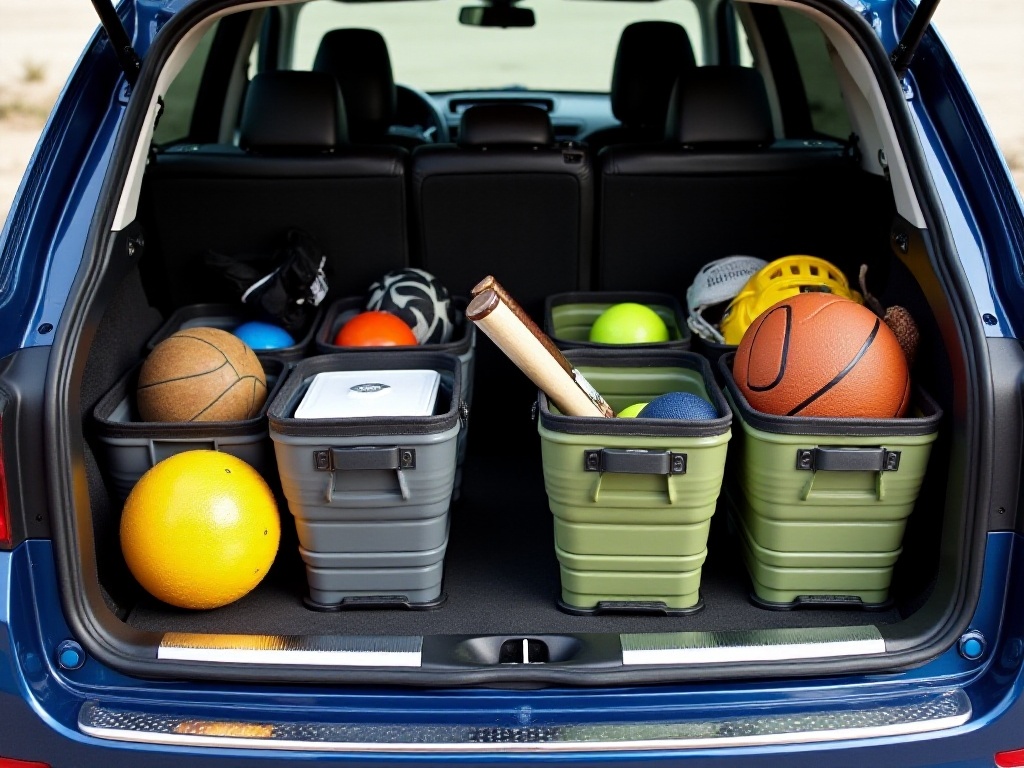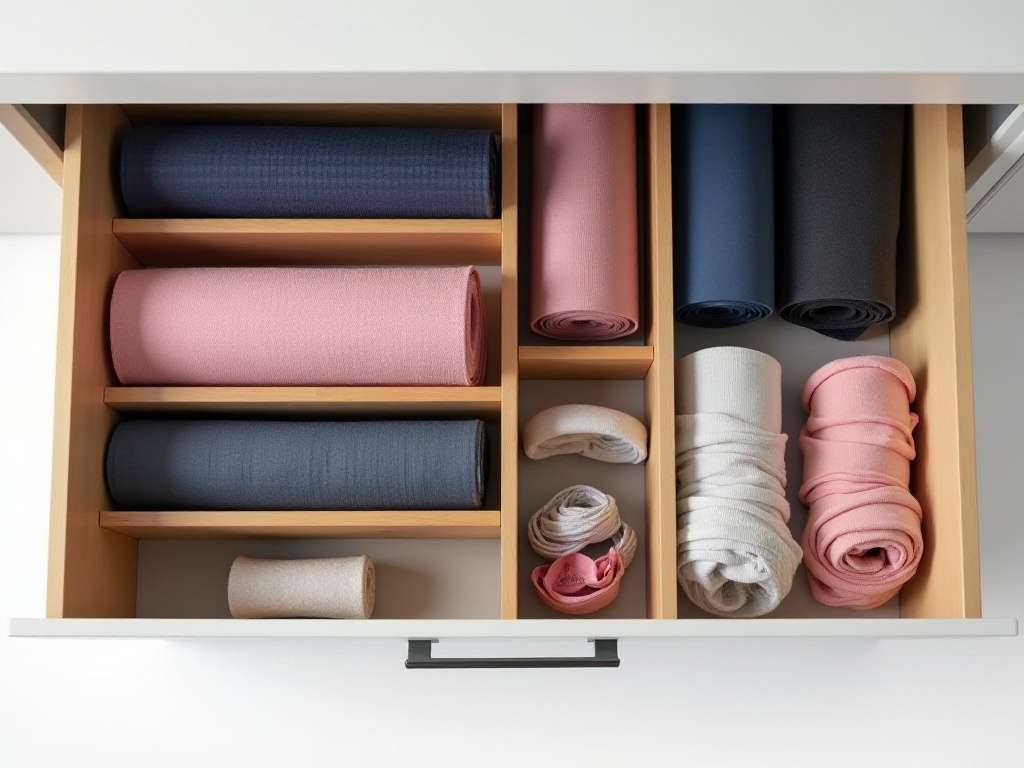Introduction
Hello everyone! As a fitness enthusiast who has been working out intensely since freshman year, I truly understand the struggles of storing exercise equipment! I remember when I first started working out, my dorm was a complete mess like a warehouse, with dumbbells everywhere, yoga mats rolled up and left around, and resistance bands often going missing. After moving out, the situation got even worse because I kept buying more equipment while the space at home remained the same.
After years of exploration and practice, I finally found an incredibly practical storage solution that not only made my home much neater but also improved my training efficiency. Today I'd like to share my personal experience with you, hoping to help fellow fitness enthusiasts who are also struggling with storage!
Vertical Storage

Wall Transformation
Honestly, I first discovered the magic of wall storage when browsing Instagram and saw a foreign fitness blogger's home setup. That wall was absolutely stunning! Since then, I started researching wall storage, and now my wall has evolved into a super storage system.
How to transform it? First, you need to choose the right hook system. I tried many brands and finally chose an industrial-grade hook combination that can bear 50kg. The best thing about this system is that the hooks can be adjusted in position and angle freely. For example, my yoga mat can be rolled up vertically and hung on a dedicated large hook, while lightweight equipment like resistance bands can be easily handled with smaller hooks.
I also installed a small blackboard under the hooks to record weekly training plans. This is not only practical but also gives it a real gym feel. After more than a year of use, I found this system particularly suitable for storing the following equipment:
- Yoga mats (rolled vertically for space-saving and shape retention)
- Resistance bands (can be hung by resistance level)
- Foam rollers (placed horizontally for easy access)
- Dumbbells (light ones can be hung directly, heavy ones used with racks)
- Pull-up bars (detachable parts stored together)
- Jump ropes (hook design prevents tangling)
To make wall storage more secure, I specifically hired professional workers to reinforce the wall. They used special expansion screws to ensure safety even when fully loaded with equipment. This investment is absolutely worth it because a good storage system needs to be not only aesthetically pleasing but also safe and reliable.
Utilizing Ceiling Space
Speaking of ceiling storage, I initially thought it was a bit excessive. Until I saw my neighbor's design, I realized it was absolutely genius! I immediately took action and installed an electric lift system in the garage, specifically for storing seasonal sports equipment.
What impressed me most about this system is its smart design. I can control the lifting through a phone app, no more climbing up and down ladders. Plus it comes with dust covers that protect the stored equipment well. I mainly use it to store:
- Winter ski equipment (snowboards, poles, boots, etc.)
- Summer surfboards
- Mountain climbing gear packs
- Bicycles
Speaking of bicycle storage, this is quite technical. I use an imported bicycle lift system, and the best part is its balanced gravity design - even a 50kg small woman like me can operate it easily. The system's weight capacity reaches 80kg, which is more than enough.
After utilizing the ceiling space, my garage floor space directly increased by more than double. Now I can finally set up a small fitness area in the garage with a treadmill and spinning bike, allowing me to exercise anytime, whether early morning or late night.
Floor Management
Foldable Storage
As a renter, I absolutely love foldable storage! My home's proudest invention is the "Transformable Storage Station." It's a multifunctional foldable storage system that can serve as a coffee table normally and unfolds into a mini fitness station during workouts.
I chose a foldable storage box with silent wheels, 60L capacity, made of eco-friendly PP material - both lightweight and durable. Most importantly, its compartments are adjustable, so I can adapt the space according to different equipment sizes.
In this storage box, I perfectly store: - A set of 12kg adjustable dumbbells - Two different specifications of resistance bands - A yoga mat - A pull-up bar set - Various workout accessories (wrist guards, knee pads, etc.)
To make storage more organized, I labeled each compartment, so there's no more embarrassment of not finding equipment. Plus, the top of this storage box is waterproof, when closed it's a perfect side table - friends who visit say this design is super smart.
Fixed Storage
For equipment that I use daily, I adopted a fixed storage solution. In one corner of the living room, I created a "workout wall" using storage racks at different levels to arrange equipment. This wall's design was inspired by the equipment area in gyms - I wanted to create that professional atmosphere at home.
I chose Nordic-style natural wood color for the storage racks, which matches my home's decor perfectly. Each shelf has been treated with anti-slip material, and all edges are rounded for safety. I divided the racks into three zones:
Top Zone: - Decorative equipment like beautiful yoga balls - Display of fitness medals and certificates - Sports-themed plants
Middle Zone: - Most frequently used daily training equipment - Dumbbell rack (arranged by weight) - Quick supplements (energy bars, protein powder, etc.)
Bottom Zone: - Heavy equipment (kettlebells, weight plates, etc.) - Large storage boxes (for seasonal equipment) - Shoe cabinet (specifically for sports shoes)
This fixed storage method is not only practical but also particularly motivating for exercise. Every time I see the neatly arranged equipment, it naturally makes me want to do a set of training. Plus, fixed storage has helped me develop the good habit of returning items to their original positions after use - no more searching for equipment all over the place.
Maintenance Strategy

Classification System
To be honest, having good storage space alone is not enough; more important is establishing a scientific classification system. Through years of experience, I found the most practical is the "frequency zoning method" - arranging storage locations based on usage frequency.
My classification system is like this:
Daily Zone (within 1-meter radius): - Yoga mats - Commonly used weight dumbbells - Resistance bands - Foam rollers - Jump ropes
Weekly Zone (within 3-meter radius): - Less frequently used weight dumbbells - Kettlebells - Weight plates - Pull-up bars - Yoga balls
Seasonal Zone (stored in storage room): - Ski equipment - Surfing equipment - Mountain climbing equipment - Camping equipment
This classification method is particularly suitable for small apartments because it maximizes space usage efficiency. For example, my home is only 60 square meters, but through this classification, I managed to fit in tens of thousands worth of sports equipment without feeling cramped.
Detailed Maintenance
When it comes to maintenance, I have quite a few secret tips. First is the odor issue, which is really important. I now do a deep clean of training equipment weekly using sports equipment-specific disinfectant spray.
For different materials, I have different maintenance methods:
Metal Equipment (dumbbells, barbells, etc.): - Weekly wiping with dry towels to remove sweat - Monthly rust inspection - Regular lubrication to keep moving parts smooth - Avoid humid environments
Rubber Equipment (yoga mats, resistance bands, etc.): - Immediate drying after use - Regular cleaning with mild detergent - Avoid direct sunlight - Prevent folding deformation during storage
Fabric Equipment (protective gear, straps, etc.): - Thorough drying after use - Regular deodorizing and washing - Store in moisture-proof bags - Regular checking of stitching
Electronic Equipment (heart rate monitors, smart bands, etc.): - Timely charging, avoid complete battery drainage - Regular disinfection and cleaning - Regular inspection of waterproof seals - Keep away from high temperatures

Conclusion
After so many years of exploration, I finally transformed my home into a mini gym. Although the space isn't large, it has all the necessary functions. Most importantly, these storage solutions have all been practically verified - whether you're renting or owning, you can find suitable storage methods.
Storage is truly a science - it not only relates to space utilization but also affects our training experience. A well-organized exercise space can really make training twice as effective. I hope through sharing this article, I can help more fitness enthusiasts solve their storage problems.
Finally, storage isn't the end goal; it's an aid to help us better maintain our exercise routine. Let's transform our homes into energetic workout spaces together!







